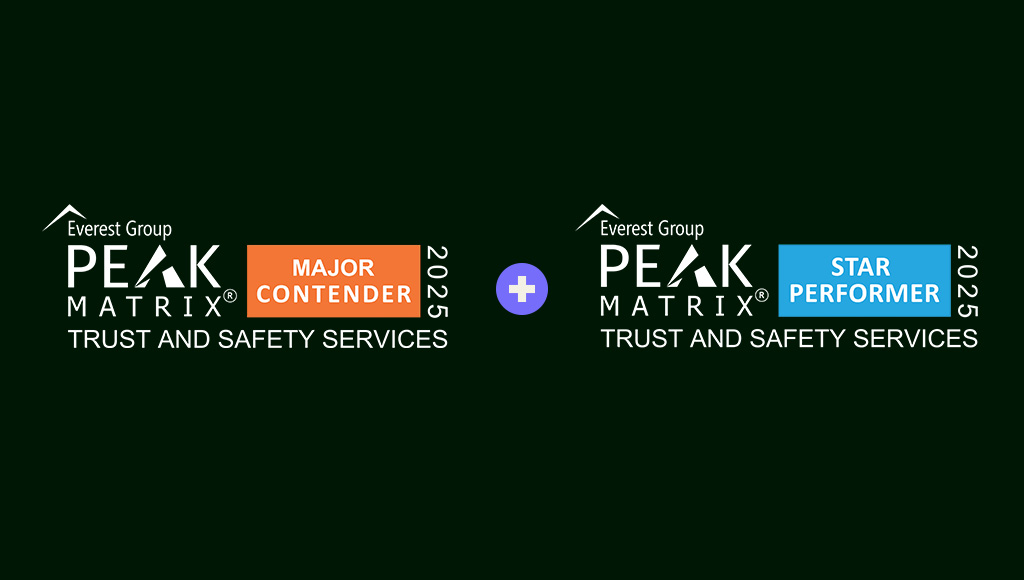Operational Resilience in Trust & Safety: Building Foundations That Scale at TrustCon 2025
-
IntouchCX Team

Trust & Safety (T&S) is evolving fast, and platforms today are tasked with not only keeping up with regulatory expectations and user needs, but also building internal systems that can scale with complexity. Yet no matter how sophisticated a platform becomes, one thing remains constant: without a strong operational foundation, even the most advanced policies and technologies will struggle to take root.
This year at TrustCon 2025, we will be diving into this challenge head-on with an innovative workshop. Led by Ailís Daly, Head of Trust & Safety, EMEA, and Alex Popken, SVP of Trust & Safety and AI Services, the session will unpack some of the core pillars required to build and grow a resilient T&S operation. Ahead of this, we’re taking a closer look at what makes a foundation truly scalable and why this should be a priority for any platform navigating today’s risk landscape.
What Makes a T&S Foundation Resilient?
Resilience in Trust & Safety isn’t just about response speed or headcount, it’s about structure, clarity, and long-term adaptability. Teams that thrive often have three things in place:
- Defined Scope and Ownership:
Everyone knows what they’re responsible for, and what they’re not. Without clarity in scope, trust and safety teams often become a catch-all, stretching themselves thin across unrelated business functions. Clear swim lanes allow for better prioritization and cross-functional collaboration. - Internal Alignment on Priorities:
It’s not uncommon for policy, enforcement, legal, and product teams to be slightly misaligned on what matters most. A strong operational foundation includes regular visibility and alignment mechanisms, whether through sprint planning, shared KPIs, or collaboration frameworks, to bring those teams back into sync. - Documentation That Scales:
Startups often rely on tribal knowledge. But as teams grow, that becomes a risk. Foundations require documentation: process maps, policy rationales, decision trees, that can onboard new team members and maintain consistency, especially across global teams.
These elements aren’t just “nice to haves,” they’re critical when dealing with time-sensitive abuse reports, moderating at scale, or facing regulatory audits.
The Role of Collaboration and Policy Co-Creation
Foundations are also tested when policies are unclear or too abstract to enforce. That’s why one portion of the upcoming workshop will focus on policy drafting and implementation, a chance for participants to reflect on how policy and operations intersect.
Drafting enforceable, actionable policies means involving the people who will carry them out. That might mean operations teams and even frontline moderators. When those voices are missing during policy development, implementation suffers, and so does the ability to iterate based on what’s working in practice.
Rather than treating policy like a static rulebook, forward-thinking teams treat it as a living document. Building policy fluency across teams and encouraging feedback loops can lead to smarter enforcement and better outcomes for users.
Operational Challenges Aren’t a Sign of Failure, They’re an Opportunity
Even the most mature teams run into operational challenges. From difficulty scaling moderation across languages, to misalignment with legal teams, to vendor inconsistency, it’s all part of the landscape. That’s why it’s so important to create space for teams to share challenges openly and learn from each other’s experiences.
One segment of the session will do just that: bring together participants to brainstorm around common pain points and swap tactics that have actually worked. Whether you’re a team of five or fifty, facing challenges isn’t the problem, what matters is how you work through them and who you bring into the room.
Why This Matters Now
Trust & Safety leaders are being asked to do more with less. Regulatory pressures are mounting. Users are more vocal—and more vulnerable—than ever. In this environment, reactive models simply won’t cut it. Teams need structures that allow them to respond quickly, scale thoughtfully, and collaborate deeply.
As Alex Popken, SVP of Trust & Safety and AI Services, puts it:
“Our goal is to provide companies—regardless of where they are on their Trust & Safety journey—with a practical framework to guide their thinking and help them build a resilient, long-lasting operating model.”
That’s exactly what our workshop at TrustCon 2025 aims to deliver, with segments focused on building foundational structure, collaborative policy drafting, and peer-to-peer problem solving.
No matter your platform size or maturity level, building a strong T&S foundation is a continuous process—and one of the most strategic investments your team can make.
Stay tuned for more insights from the session, and if you’re attending TrustCon, don’t miss the chance to join us.















